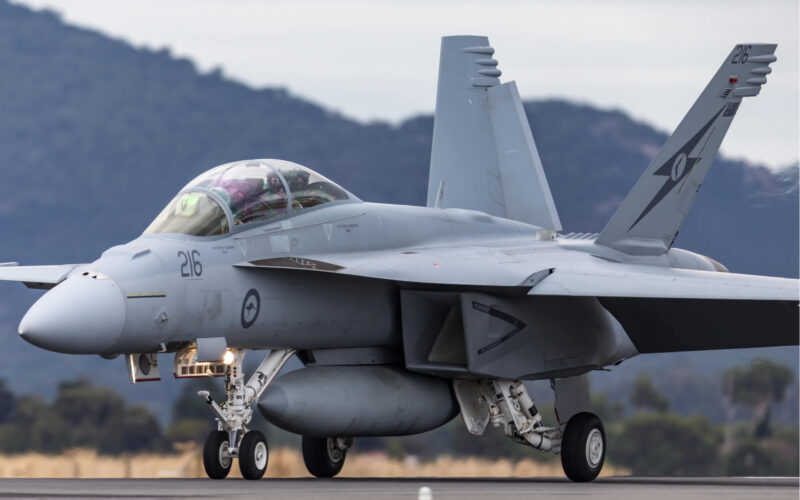An investigation found a Royal Australian Air Force pilot responsible for veering a Super Hornet off the runway, forcing the flight crew to eject.
On December 8, 2020, a McDonnell Douglas F/A-18F Super Hornet of the Royal Australian Air Force was taking off with several other jets from Amberley airbase in Queensland, northeastern Australia, when it veered off to the right side of the runway, forcing the flight crew to eject.
Amberley Emergency: Two crew eject from a Super Hornet on take off. The strike fighter ditched off the runway. See the video on 7NEWS at 6pm. https://t.co/133ij6K8Np #7NEWS pic.twitter.com/Y9WrUxa1qY
— 7NEWS Brisbane (@7NewsBrisbane) December 8, 2020
The results of the safety investigation conducted by the Defence Flight Safety Bureau (DFSB) were obtained by Australian Senator Rex Patrick and published by ABC News on June 8, 2022.
Investigators found that “substandard adherence to checklist actions prior to the aircraft lining up resulted in a master caution and check trim message on the left digital display indicator as the throttles were advanced into afterburner for takeoff,” ABC reports.
The warning lights distracted the pilot who lost directional control of the aircraft. As the fighter hit the edge of the runway, the weapons system officer sitting in the rear seat triggered the ejection procedure.
The two pilots received minor injuries from the ejection. The fighter was damaged during the incident. Pictures shared online showed burning marks around the cockpit of the aircraft, which could have been caused by the explosive charge of the ejection.
During a hearing at the Australian Senate on April 1, 2022, Air Vice-Marshal Stephen Meredith said the aircraft “completed a successful return-to-service flight” on December 6, 2021, almost a year after the incident. An inquiry made by Senator Patrick found repairs to have cost about $1 million (AU 1.51 million).
The incident had led to a 10-day fleet-wide grounding of the RAAF F/A-18F Super Hornets and EA-18G Growler electronic warfare aircraft.

